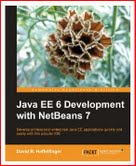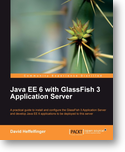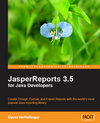Navigation
Displaying JasperReports PDF Reports on the Browser
Improving Performance
Although the previous example works as intended, with a few minor
tweaks we can make it perform better. Instead of creating an array of
bytes and passing it to the write() method of the ServletOutputStream
class, we can stream the PDF directly to the browser. To accomplish
this, we must first get the compiled resource as a stream by calling the
getResourceAsStream() method in the ServletContext.
This method returns an instance of java.io.InputStream that
we can pass as a parameter to the runReportToPdfStream()
method of the JasperRunManager class. The following example
demonstrates this technique:
package net.ensode.jasperreportsbrowserdemo;
//import statements omitted
public class JasperReportsBrowserDemoServlet2 extends HttpServlet
{
protected void doGet(HttpServletRequest request, HttpServletResponse response)
throws ServletException, IOException
{
ServletOutputStream servletOutputStream = response.getOutputStream();
InputStream reportStream = getServletConfig().getServletContext()
.getResourceAsStream("/reports/Simple_Report.jasper");
try
{
JasperRunManager.runReportToPdfStream(reportStream, servletOutputStream,
new HashMap(), new JREmptyDataSource());
response.setContentType("application/pdf");
servletOutputStream.flush();
servletOutputStream.close();
}
catch (JRException e)
{
//handle the exception
}
}
}
The two main changes from the previous example are highlighted in bold. The
runReportToPdfStream()
method of the JasperRunManager streams the PDF report to
the browser as it is generated. This way we don't have to store an array
of bytes in memory as in the previous example. When using this
technique, the content length can't be set, therefore the client won't
be able to keep a persistent connection open to the server, but that
usually isn't important with PDFs, because the entire PDF is self
contained and the client won't need to ask for more info.
Conclusion
As can be seen from the examples provided in this article, sending a JasperReports generated PDF report to a browser is not a difficult task. Similar techniques can be used to export HTML, RTF, XLS or any other output format supported by JasperReports.
Acknowledgments
Thanks to Barry Klawans from JasperSoft for providing valuable feedback.
Resources
- Getting Started With JasperReports
- Creating Database Reports With JasperReports
- JasperReports' Web Site
- The JasperReports Ultimate Guide - an eBook published by JasperSoft, creators of JasperReports
- Servlets Tutorial











